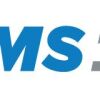By Art Hsieh, EMS1 Editorial Advisor
After reading this story on nonpaying responses in Pennsylvania and another one about a “surprise bill” for a paramedic response in California, I am beginning to wonder whether EMS reimbursement is one of this country’s greatest secrets. It seems like every week, someone is shocked about EMS’ financial state of affairs.
So in the spirit of a public service announcement that you can share with your community, let me shine some light on this matter:
1. EMS Service is Not Free
There are fixed costs of readiness — personnel, stations, supplies, ambulances and training — and response costs — fuel, disposable supplies, and reporting. There is an important corollary; even if your community’s 911 emergency response is provided by a volunteer organization, it still isn’t free. Guaranteeing an EMS response, volunteer or paid, costs money.
2. Property Taxes Don’t Cover EMS Call Response
This may not be true in all jurisdictions, but it is certainly true in many. It’s painfully so in areas where government demands a private company to provide the service at no cost, for the privilege of billing the patient for its efforts.
3. Insurance Doesn’t Cover EMS Calls
Some insurance programs will cover the entire cost of an EMS response, except for a co-pay. But most insurance companies don’t. Medicare reimbursement falls short of paying for the full cost. Medicaid reimbursement is even worse. Let’s say that Medicaid might cover the cost a fuel for the day. Maybe. And here’s the kicker. Some contractual agreements prohibit agencies from billing the balance of the bill to the patient and some volunteer agencies choose not to bill the patient.
4. When You Pay Your Ambulance Bill, You are Paying for Others
This isn’t just an EMS oddity. Welcome to the world of health care cost distribution. For every individual who cannot or will not pay their fair share, there are many others who need to cover that shortfall. Emergency medical response and emergency care is this country’s form of socialized medicine. It’s existed since Emergency Medical Treatment and Labor Act (EMTALA) was enacted in 1986. We cannot withhold care from you, regardless of your ability to pay.
5. EMS Will Respond Regardless of the Situation
Because that’s what we do. EMS providers perform all sorts of non-emergency care ranging from a lift assist to making a cup of tea to simply listening to a lonely widow in the middle of the night.
Responding to these social service requests and well-being checks is an everyday event for EMS providers. And we mostly do it gladly and with compassion and respect. Most EMS providers frankly don’t care about the billing, even though we know it helps put food on our tables, puts a roof over our heads,= and pays for our children’s education. We will be there when you need us, if we can keep the ambulance fueled and running.
About the author
Art Hsieh, MA, NREMT-P currently teaches at the Public Safety Training Center, Santa Rosa Junior College in the Emergency Care Program. Since 1982, Art has worked as a line medic and chief officer in the private, third service and fire-based EMS. He has directed both primary and EMS continuing education programs. Art is a textbook writer, author of “EMT Exam for Dummies,” has presented at conferences nationwide and continues to provide patient care at an EMS service in Northern California. Art is a member of the EMS1 Editorial Advisory Board. Contact Art at Art.Hsieh@ems1.com.
This article originally appeared on EMS1.com.



